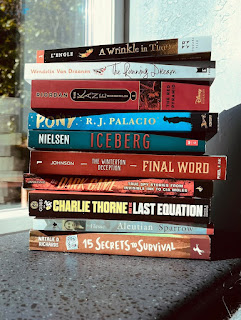And wow—was it worth the wait.
I’ve read a few teen detective/cold case thrillers over the past couple of years (it's become a bit of a subgenre), but A Good Girl’s Guide to Murder really stands out. The suspense was tight. The pacing sharp.
At first, I wasn’t sure what to make of Pip, the teen detective at the center of it all. She has no survival instinct when it comes to her suspects. If she finds a reason to suspect you, she’ll ask you point blank— no buffer, just straight-up confrontation. It was a little jarring at first, especially compared to the usual “sneak around and whisper about it later” approach I’ve seen in other YA mysteries. But honestly? It grew on me. Fast.
Because as much as Pip is bold (and sometimes questionably reckless), she’s also smart. She plans. She adapts. She thinks several moves ahead. And she isn’t afraid to admit when she gets it wrong—something I appreciated as both a reader and a teacher who’s watched a lot of teens grow through trial and error.
This one has definite appeal for mystery lovers, true crime podcast fans, and anyone who appreciates a layered, twisty story that sticks the landing. It’s sharp, fast-paced, and just the right amount of chilling.











